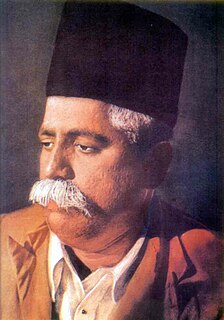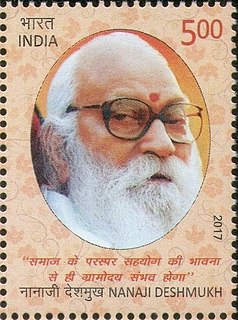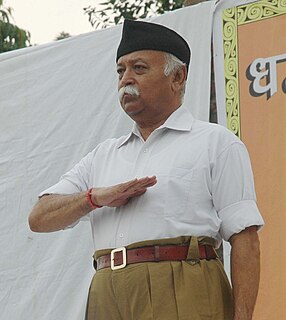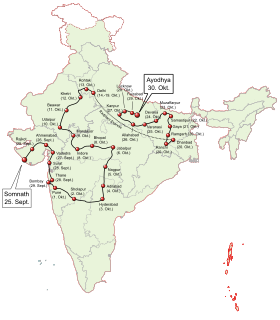This article is being considered for deletion in accordance with Wikipedia's deletion policy. Please share your thoughts on the matter at this article's entry on the Articles for deletion page. |
This article needs additional citations for verification .(August 2014) (Learn how and when to remove this template message) |
Moropant Pingle | |
|---|---|
| Born | 30 December 1919 |
| Died | 21 September 2003 (aged 83) Nagpur, Maharashtra, India |
| Nationality | Indian |
| Education | Bachelor of Arts in English from Morris College, Nagpur |
| Organization | Rashtriya Swayamsevak Sangh, Vishwa Hindu Parishad |
Moreshwar Nilkanth Pingley, also known as 'Moropant', was a senior leader of the Rashtriya Swayamsevak Sangh (RSS). During his 65 year affiliation with the RSS as a pracharak he held numerous posts, the most notable of them being the Akhil Bharatiya Bouddhik Pramukh. He was one of the six unofficial Sarsanghchalaks during the 1975 state of emergency and a candidate for sarsangchalak after Balasaheb Deoras. [1] He was reported by the Indian media as the "Field Marshal" of the Ram Janmabhoomi movement, which resulted in the demolition of the Babri Masjid in 1992. Numerous projects were undertaken under his mentorship, including research on cows, tracing the underground Saraswati river, and re-writing Indian history. Moropant shunned publicity.

Rashtriya Swayamsevak Sangh, abbreviated as RSS, is an Indian right-wing, Hindu nationalist, paramilitary volunteer organisation that is widely regarded as the parent organisation of the ruling party of India, the Bharatiya Janata Party. The RSS is the progenitor and leader of a large body of organisations called the Sangh Parivar, which have presence in all facets of the Indian society. Founded on 27 September 1925, the RSS is the world's largest voluntary organisation. It is the largest NGO in the world, while the BJP is the largest political party in the world.
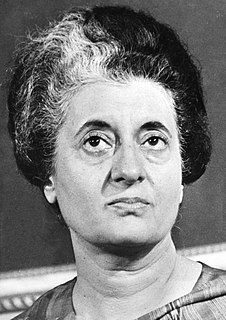
In India, "the Emergency" refers to a 21-month period from 1975 to 1977 when Prime Minister Indira Gandhi had a state of emergency declared across the country. Officially issued by President Fakhruddin Ali Ahmed under Article 352 of the Constitution because of the prevailing "internal disturbance", the Emergency was in effect from 26 June 1975 until its withdrawal in January 1977. The order bestowed upon the Prime Minister the authority to rule by decree, allowing elections to be suspended and civil liberties to be curbed. For much of the Emergency, most of Gandhi's political opponents were imprisoned and the press was censored. Several other human rights violations were reported from the time, including a forced mass-sterilization campaign spearheaded by Sanjay Gandhi, the Prime Minister's son. The Emergency is one of the most controversial periods of independent India's history.
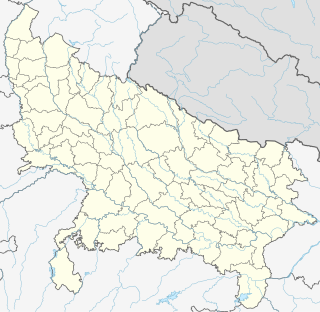
Ram Janmabhoomi is the name given to the site that is the birthplace of Rama, the 7th avatar of the Hindu deity Vishnu. The Ramayana states that the location of Rama's birthplace is on the banks of the Sarayu river in a city called "Ayodhya". A section of Hindus claim that the exact site of Rama's birthplace is where the Babri Masjid once stood in the present-day Ayodhya, Uttar Pradesh. According to this theory, the Mughals demolished a Hindu shrine that marked the spot, and constructed a mosque in its place. People opposed to this theory state that such claims arose only in the 18th century, and that there is no evidence for the spot being the birthplace of Rama.
